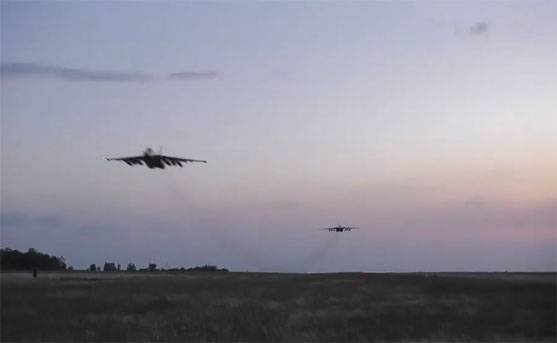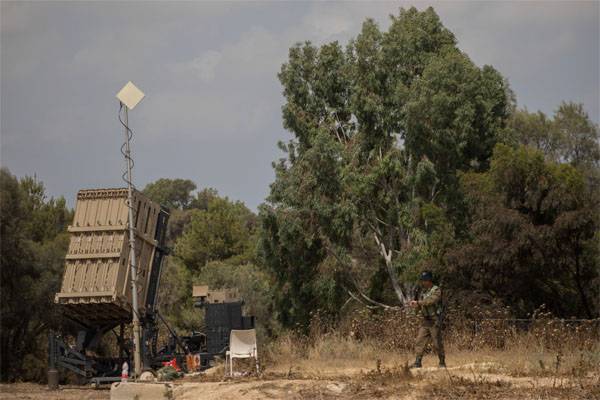Article "The intellectual dead end of the Russian fleet? No, Russian society " raised the question of, what society would like to get from the navy. But, since it was not society who wrote it, then there was no answer, although later it was followed by a number of responses.
One simple thing to understand: answer in its simple form, which one person could give, no. The fleet is a continuation of the policy and strategy of the country as a whole, relatively speaking, this is politics embodied in metal.
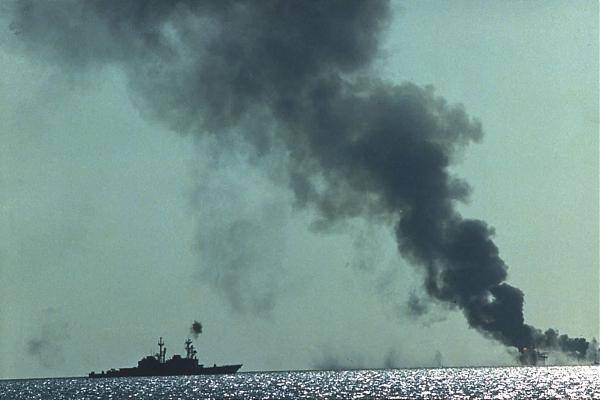
Operation “Mantis” - an example of powerlessness “mosquito” fleet in battle with a full
How would the question of whether, what kind of fleet do we need in some ideal world, where faces, decision makers, know for sure, what they want? Goals would be defined, which the country should achieve in certain regions of the world in the next thirty to forty years, at least approximate. Then, based on the General Staff, the political leadership would have to determine the list of military tasks, which may have to be addressed to achieve these political goals. Based on this list, Joint Staff (with marine section) in cooperation with the Main Headquarters of the Navy should have determined what, what part of these military tasks should the fleet solve.
Then the turn of the Navy would come - knowing the approximate list of tasks, which he will have to decide, the fleet would have to decide on the type and number of ships for this, and, starting from this, adjust the shipbuilding program for the tasks.
And then we would all know, what kind of fleet do we need.
Of course, as if nothing could be foreseen. Predicting the future is a thankless task, even scientifically sound. But to foresee approximately - it would be quite possible.
In the absence of intelligible information “from above”, citizens may well make such an intellectual effort on their own and give an answer to the question “what do we want from the fleet??», true to himself. If a large number of citizens do this, you end up with a set of people's expectations, which will quite objectively show that, what the population wants from the navy, and these desires will actually be a completely "legitimate" starting point for naval development, at least one of them for sure.
So far, nothing like that. Today's decision-making system is very far from even normal logic, not even speaking about, so that it takes into account long-term political plans. There is no such accounting today, but there are voluntaristic requirements of the ground officers of the General Staff, which the Navy, not bothering with anything, performs according to the principle "as God puts, if only the numbers fit together ". So, eg, ships of the project appeared 21361 "Buyan-M" - a reaction to the General Staff's demand to ensure the use of cruise missiles from specialized missile ships on one side, and the fleet's awareness of budgetary constraints on the other. But this is wrong, this is a reaction of the amoeba according to the principle "I was pricked - I shrank", in reality, everything should be based on the strategic priorities of the country as a whole.
Let's show that, how much the results of such "strategizing" can differ depending on the boundary conditions.
Let's, The SVR and the GRU independently of each other receive information about, that NATO is planning a land invasion of Russia. Let's not evaluate now, is it real or not really (unreal and impossible, but this is not about that), let's estimate, what should have been our fleet if we were waiting for the "reincarnation" of the Great Patriotic War. Let's practice, so to speak, brain abstract exercise. And we need a fleet in this case, capable firstly, ensure the landing of large numbers of troops, to help the army, Secondly, capable of repelling massive air strikes against convoys and ship groups, third, capable of providing a guaranteed possibility of escorting convoys along the coast when the enemy attempts to blockade us, ensure the possibility of carrying out military transport, and keep the sea communications important for Russia, primarily with Kaliningrad, AMS, the lines Chukotka - Kamchatka - Primorye and the Sea of Okhotsk in general. And also capable of preventing the enemy from landing. Mine defense will be especially important, and mine action forces in the fleet will be represented very impressively, along with airborne and escort.

Experts have called the cause of the strengthening of supervision in the militants' Al-Rukbane "
Or an alternative example. Russia plans to launch a preemptive nuclear strike against the United States. What do we need in this case? Then we need a fleet, able to covertly detect and, on order, destroy American SSBNs, secretly deploy carriers of high-precision weapons at sea (even a submarine, even surface ships), capable of delivering precise "surgical" strikes on the territory of the United States, destroying the radar of the early warning system, command posts, communication infrastructure with submarines, leaders, aircraft threatening the fleet (anti-submarine) to ensure that the Strategic Missile Forces gain time, sufficient for a massive blow. At the same time, there are no alternatives to the fleet - there are no other forces, able to fight submarines and hide in trade traffic with a stock of missiles on board, and so on for weeks before receiving the command to hit, does not exist.
Easy to see, that we need different fleets in different cases, and this is normal - the fleet should be built "for the strategy", with an eye to political goals, and those military tasks, to solve to achieve them.
In fact, you have to have "in reserve" strength for many variants of events, but still you need to start from real tasks.
but, not yet being able to determine exactly what, what the Navy should be, we know for sure, what it shouldn't be. Not knowing exactly what, what appearance of the Navy will be optimal for the country, we know for sure a number of errors, which should not be allowed.
One of these mistakes is the focus on the so-called "mosquito fleet" - naval forces, consisting of small warships with a small displacement - all sorts of combat boats, small rocket ships and the like. This idea, contradicting the domestic, and foreign combat experience, as well as contradicting military science, has gained strange popularity in recent years. It is worth dissecting it and showing its utopianism in order to avoid further spread of this harmful concept..
The rise and fall of small ships
Man likes stories about that, how the weak defeated the strong. Like, because, according to the apt expression of one smart man, "it means, that the smart won the strong ", and empathy for such a phenomenon is inherent in us by evolution - we, as a species, have succeeded, precisely defeating brute strength with the mind. We are so made, biologically. Initially, all sympathy for small ships, supposedly capable of bravely going to sea and sinking an aircraft carrier there - they. We just want to believe it, and many lack the will to face the truth and admit, that there is nothing behind this desire.
Different press works in parallel, maintained by the Department of Information and Mass Communications of the Ministry of Defense of the Russian Federation, who happily praises any new ship so, as if it were the Death Star. New RTO? "The Death Star"! Another new RTO? Another "Death Star", even deadlier than before! patrol ship? "Death Star" doubly!
Of course, we build massive frigates, the main propaganda pressure would be on the killing superpower of the frigates. But we have massively built RTOs. And people, unable to navigate technical and tactical nuances, but who trust the RF Armed Forces as a public institution, believe in the power of RTOs. To the current "edition" of the "mosquito" fleet. Looking ahead, remark, that "this is all" does not come from the Navy, find an officer on active duty, sincerely believing in the omnipotence of ships with a displacement of up to 1000 tonnes, almost impossible, although opinions about their value can be very different.
Let's figure it out in the end, how is it in reality.
Historically there have been two periods, when the small surface ship, armed with the latest technology, proved to be radically superior to the "conventional" large surface warship. The first time it was then, when were the first torpedoes invented, or as they were called in those days - self-propelled mines. In the last quarter of the 19th century, small ships, armed with torpedoes, really instilled fear in the enemy, as it turned out, that previously built warships were often powerless against them.
But soon, with the change of generations of warships in large fleets, the superiority of the "torpedo boats" evaporated - shipbuilders adapted to the new threat, such things appeared, as anti-torpedo nets, allowing to protect the ship from being hit by a "missed" torpedo, rapid-fire cannons appeared, allowing to shoot the destroyer entering the attack, increased range of actual fire of naval artillery, the speed of large ships has increased, which made it possible to sometimes evade torpedo attacks by maneuvering, appropriate tactical techniques were worked out, became much stronger than the case, anti-torpedo protection appeared.

Russia and China: pros and convergence of contradictions in the XXI century
In the first quarter of the next, XX century, minonostsы, were the main carriers of torpedoes, have already firmly taken their place "on the sidelines" after the large artillery ships. World War II showed, that the main weapon of a non-aircraft carrier surface ship is a cannon. In the same war it turned out, that high-speed and maneuverable torpedo boats are incapable of damaging large displacement surface warships. Soviet experience with boats, desperate to drown small vehicles in the Black Sea and Baltic, should not deceive anyone - the largest warship of the Kriegsmarine, which they sunk, itself was actually a torpedo corvette, although it was classified by the Germans differently.
The takeoff of torpedo-carrying small ships was short..
The second period was no less short., when for a moment by historical standards. Small ships have become a significant force again. It's about the beginning of the era of anti-ship cruise missiles.
The beginning of this era is loud, to the whole world, announced the Egyptian Navy, sunk in 1967 the Israeli destroyer Eilat by Soviet anti-ship missiles P-15, launched from Soviet missile boats. A little bit later, at 1971 year, Indian Navy, with the help of Soviet missile boats again, inflicted heavy losses on the Pakistani Navy, and successfully raided Karachi, using anti-ship missiles to strike ground heat-contrast targets in the port (fuel tanks).
Then the whole world hit the rocket theme, in the NATO countries, some small missile ships and boats were created after others, even the USA did not stand aside, creating a very effective "Pegasus", but ... active interference put the effectiveness of the missiles "into question" already in 1973, during the naval battles of the next Arab-Israeli war, when not a single Arab missile hit the target - Israeli boats interfered with all of them. FROM 1973 no anti-ship missiles hit the ship in years, obscured. Small ships URO - boats or MRK, still remained dangerous to any surface ship, who would have been hit by them, but such a "one-sided game", as in the case of "Eilat" has never been, and the growth of the power of warships from the end of the 70s many times outstripped that for small.
Besides, the main enemy of surface ships in the war at sea is aviation, turned out to be truly deadly against the "mosquito" forces, much more, rather than against large surface ships.
The rise of power of small ships is over, not having time to start.
And combat experience confirmed this.
"Mosquito" forces in battle
Today there are three striking examples of, how modern "mosquito" fleets proved themselves in combat with modern surface forces and aviation.
The first of these was Operation Morvarid (Persian. "Pearl") - the destruction of most of the Iraqi fleet by Iranian aircraft at the beginning of the Iran-Iraq war of 1980.
It was just a classic example of the collapse of popular ideas about the subject in Russia.. The Iraqi fleet consists of missile and torpedo boats, operates in its coastal waters, defended by fighter aircraft, on alert at nearby airfields. Familiar? This is how many see the successful defense of their shores..
but alas. First, the enemy concentrates obviously large air forces, than the defender has in the area, incapacitates the airfield, gains a short-term opportunity to operate indefinitely over the waters of the defender, later, in the best traditions of Russian ideas about the subject, the defender sinks one Iranian corvette with his missile boats, after which planes appear and destroy 80% Iraqi Navy, including all naval forces, participating in the operation. Nothing helped - not the presence of an airfield with air defense fighters, not in time (keyword!) more modern interceptors from other airfields who came to the rescue.
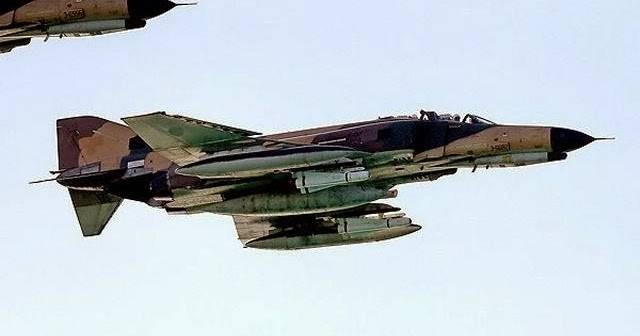
Iranian “Phantom” with missiles “Maverick” - Executioner of the Iraqi Mosquito Fleet
The result is a rout at sea, bonus - Iraqi oil production facilities destroyed by the commandos. "Mosquito fleet, comparable in number to the number of small surface ships, which we have, eg, on the Black Sea, was destroyed in about five minutes. Not in an hour, not in half an hour. During the attack, lasting five (but in fact even less) minutes. Without taking into account the flight time of aircraft, of course.

Expert condemned the "White Helmets" for preparing provocations with "chemical weapons" in Syria
The second time the "mosquito" fleet was able to prove itself in all its glory during the American operation "Prairie Fire" against Libya in 1986.
24 Martha 1986 of the year, American aircraft began to attack Libyan forces at sea. At night 25 March, an AWACS aircraft detected the Libyan air Libyan MRK pr. 1234 Ein Zakit. The Americans attacked this ship that day. First, the RTO was hit by an anti-ship missile system "Harpoon" released from a carrier-based attack aircraft, later, already burning MRK was finished off by bombs and sank.
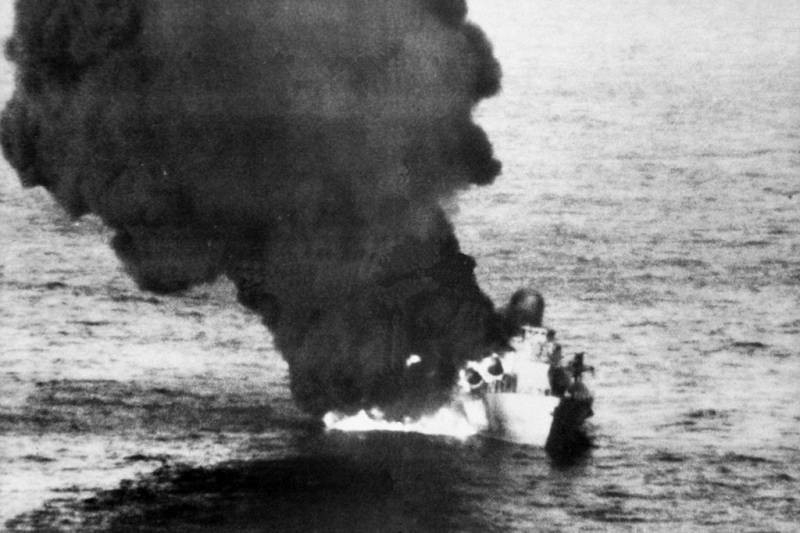
MRK project 1234E “Ein Zakit”, 25 Martha 1986 of the year, morning
A little later, another missile was hit by the second MRK of the same project - "Ein Mara", who was seriously injured. Another victim of the "Intruders" was a French-built missile boat, also sunk. The Americans had no losses, no fire was opened on them. It is worth noting, that at the time of their attack by the Americans there was a cruiser URO "Yorktown". But they didn't even see him, and did not try to attack. Soon, the Americans launched attacks on Libyan territory. The Mosquito Fleet didn't just fail, he didn't show himself at all.
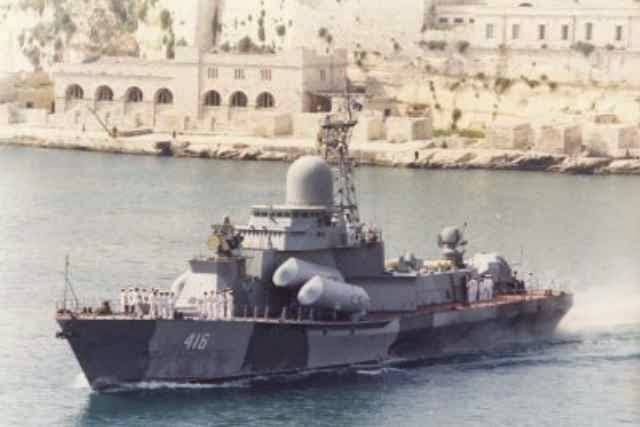
Former “Ain Mara”, and then “Tariq ibn Ziyad”. Libyan MRK, hit survivor “Harpoon”
The third example, that small ships are powerless against a full-fledged fleet, gave the Iranians. During the American operation "Praying Mantis" in 1988 year, when the United States set out to end the "tanker war" in the Persian Gulf and Iranian mining of neutral waters, and sent a group of warships there to "educate" the Iranians, former main "instigators" of strikes against oil tankers and mining. For the Americans, it was the first naval battle since World War II..
18 April 1988 years the Americans destroyed artillery platforms in the sea, which Iran used as stationary bases. After that, Iranian motor boats with light weapons began shelling tankers in the Persian Gulf. One of the motorboats was sunk by deck aircraft, the rest retreated. Immediately after this, the small missile corvette of the Iranian Navy "Joshan" (essentially a missile boat with a displacement 265 tonnes, missile-armed "Harpoon") tried to attack the cruiser URO "Wainwright".
but, the cruiser averted the Iranian anti-ship missile system by jamming and sank the Iranian ship with a retaliatory missile strike. Iranians tried to air strike the cruiser with a pair of "Phantoms", but they didn't break through the anti-aircraft fire, then the American compound tried to attack two Iranian small (1100 tonnes, a little more, than MRK "Karakurt") rocket ship, that, however, in Iran were considered frigates. Result - one sunk by carrier-based aircraft, the other is destroyed by her, but towed to port.
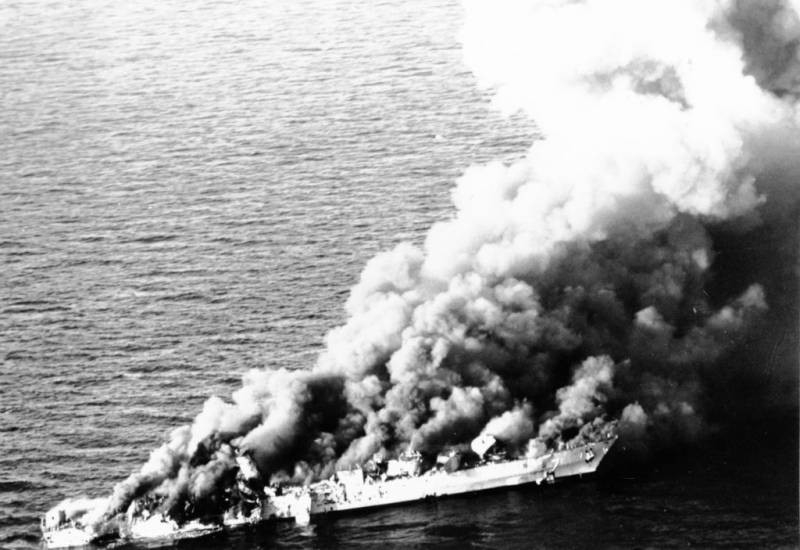
Iranian 1100 ton “frigate” “Sahand”. Close in displacement to our new MRK. After air strike
Mosquito fleet has failed again.
It was natural. Large surface ships have much more powerful radars., able to detect a target from such a distance, from which no corvette or RTO will detect anything, for large surface ships, the radio horizon is slightly farther due to the greater height, on which the radar antennas are located, it has incomparably better jamming complexes. And against aviation, "toy" air defense systems of small ships are almost useless.
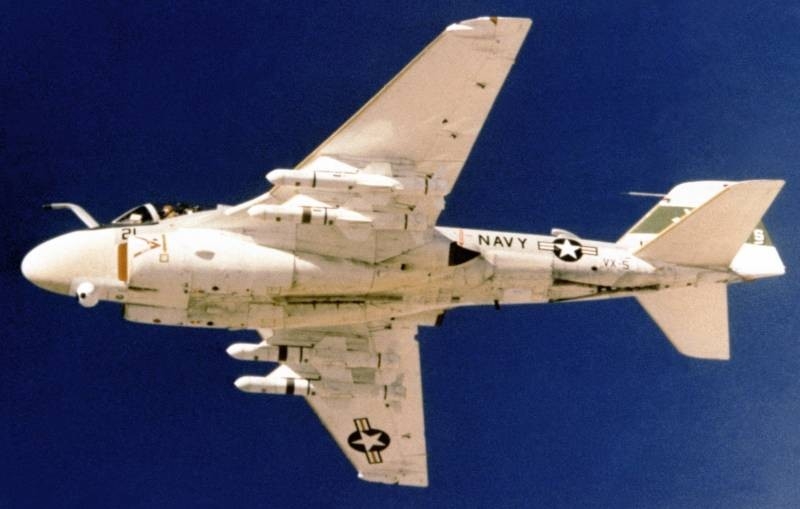
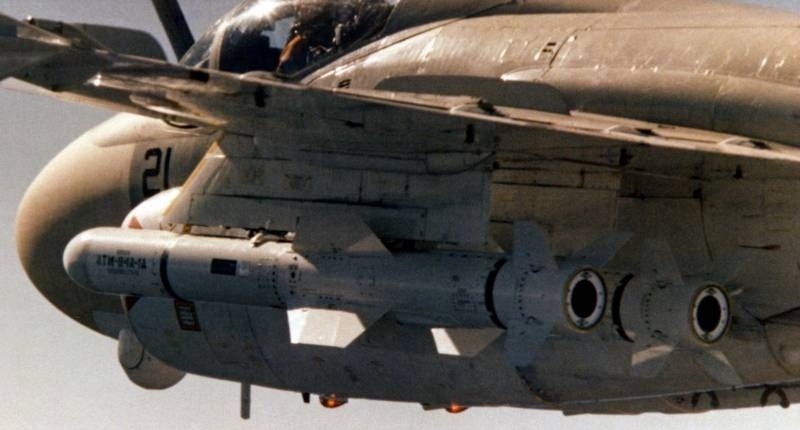
The main American instrument of war at sea in those years - A-6 “Intruder” with PKR “spear”
What conclusions can be drawn from all the listed examples? And the conclusions are that the "mosquito" fleet can do something only then, when the newest small ships, equipped with the latest weapons collide with ships in battle, built on technologies of the previous era. Both "Eilat" and Pakistani ships belonged to the era of World War II, and the Soviet-built RCA were at that time the newest, like their missiles. Once the technology gap is closed, how the effectiveness of the mosquito fleet, which admires contemporaries, immediately disappears, and the superiority of other forces in weapons begins to work, in the range of detection and destruction of the target, in vitality.
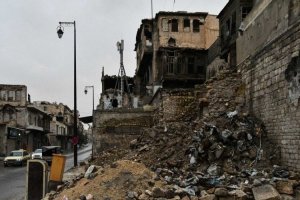
Ukrainian mercenary "Al-Nusra" was blown up by an IED in the vicinity of Aleppo
Besides, fights after 1973 years clearly show, what is first, anti-ship missiles do not break through the interference, and secondly, that small ships sometimes cannot detect the target in time - so the Libyans could not timely detect the Yorktown. This is also very revealing..
But maybe these are the Arabs and Persians such useless warriors, and the experience of the USSR speaks of some other results? not really.
Soviet experience
For the time being, the Soviet Navy did not have aircraft carriers, did not develop any offensive doctrines, did not seek to obtain expeditionary opportunities. Although operations had to be carried out in Africa. The main tasks in the Navy during the Cold War were to contain the enemy (USA) from aggression. Need to say, that until a certain point the fleet strategy, invented by C. D. Gorshkov, worked quite well. The navy carried out nuclear deterrence of the United States using SSBNs, equipped with ballistic missiles, and at the "local" level held back the US Navy corny keeping the Americans at gunpoint. The direct tracking ship was supposed to follow the American ships, ensuring the issuance of target designation to the strike forces, being at a safe distance. Such a scheme, although it "gave off" suicide for the tracking ship, but for many years it provided serious pressure on the enemy.
Moreover, the most interesting thing is, where the Soviet Navy was going to give the Americans their first battle.
Soviet strategists proceeded from the fact, that the war will develop from a political crisis to a full-scale conflict very quickly, and it will be impossible to deploy naval forces on the theater of operations dangerous for the USSR after the outbreak of hostilities. therefore, the fleet had to be deployed in advance. Within the framework of this concept, the USSR kept combat-ready forces, ready to engage immediately in all theaters, from where it could be attacked by the Americans and their allies. These forces were reduced to operational squadrons (opesc) non-permanent composition. Here is a list of them with regions, for which they were responsible:
5-I am operational squadron - Mediterranean;
7-I am operational squadron - Atlantic Ocean;
8-I Operational Squadron - Indian Ocean and Persian Gulf;
10-I am an operational squadron - Pacific Ocean;
17-I Operational Squadron - South China Sea (based on Cam Ranh, Vietnam)
Let's not find out now, was that strategy correct. There were also dubious moments. Another thing is important - the USSR Navy saw the removal of defensive lines there as a guarantee of solving problems in the country's defense, where the enemy was going to accumulate forces and from where he was going to beat - to the distant sea and ocean zones. Even the naval missile-carrying aviation in the late 80s received a "long arm" - the Tu-95K-22 missile carrier, armed anti-ship missiles X-22. Admiral SG. Gorshkov quite rightly characterized the fleet being built under his leadership as “ocean, nuclear missile ". Exist the USSR for another ten years, to these two characteristics, a third would inevitably be added - "aircraft carrier".
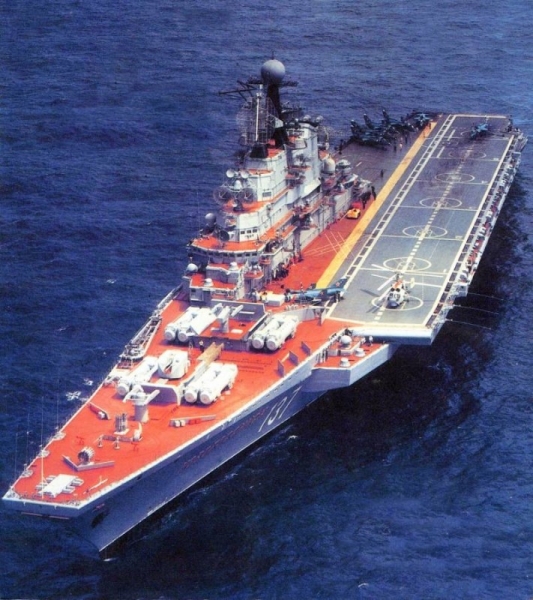
Mosquito fleet, tell?..
Small ships in the Soviet Navy, but, It was, but as part of a "large" fleet with limited missions. At first, in the USSR there were IPC - small anti-submarine ships, whose task was the PLO in the coastal and near sea zones and ensuring the operations of nuclear submarines (ocean component) when leaving bases. Secondly, RKA and MRK, which there were a lot in the USSR Navy, as if "propping up" the ocean fleet, contributed to, so that he can complete the assigned tasks.
for example, show SKR, destroyers and cruisers were on combat duty in the central Mediterranean, periodically appearing in western, RTOs could hide in the Aegean Sea, among the many islets, forming another defensive echelon opesc. Similarly in the Northern Fleet, bye naval missile aircraft, surface fleet and submarines would attack NATO forces in the Barents Sea, RTOs could conduct raiding operations in the Norwegian fjords, in search of enemy ships hiding there. There were similar developments for the Kuriles. The Soviet "mosquito" fleet really existed, but as part of the "ocean, nuclear missile ".
The Navy did not fight at sea with an enemy equal in strength, but theoretical developments of the fleet, exercise experience, as with real maneuvering ships, and command and staff, showed, that the combat stability of ships in the near sea zone without a force order, taken out to the far sea zone is not provided. And it is true, any nuclear submarine can be in the underwater sound channel, track the movement of enemy ships from tens of kilometers or more, surfacing from a "dangerous" depth, it can attack BMZ ships with torpedoes and anti-ship missiles, and break away from the pursuit with a "jerk" with a departure to a safe distance.
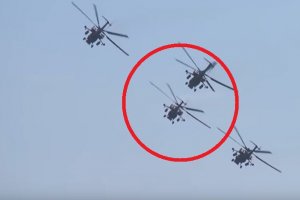
The video of the first use of the latest missile for Mi-28nm
What do you need, to prevent her from raiding? You need to drown it back in the DMZ, either by their submarines, or patrol aircraft, or DMZ surface ships.
What a typical force outfit looked like, ensured the exit of SSBNs from the base during the threatened period, if there is an enemy at a range of weapon use? First from the brigade (6 units) up to two (12 units) small anti-submarine ships - IPC. It was they who would displace, attacking with weapons, or would sink enemy submarines in ambush at the exits from the base or bases. Secondly, the same forces in the far sea zone - TFR. Etc. 1135 - fast and dangerous PLA hunters, good speed besides. About 3 units in our case. Aviation - about a regiment of anti-submarine aircraft, possibly a mixed air regiment - aircraft and helicopters. DEPL Brigade, of 6 submarines for ambush in narrow places, where the enemy submarine can "slip" into the protected area, where is the deployment.
Easy to see, that it's just anti-submarine forces, providing SSBN exit from bases, and no more. And representatives of the "mosquito" fleet in the composition of these forces are, but they are not limited to.
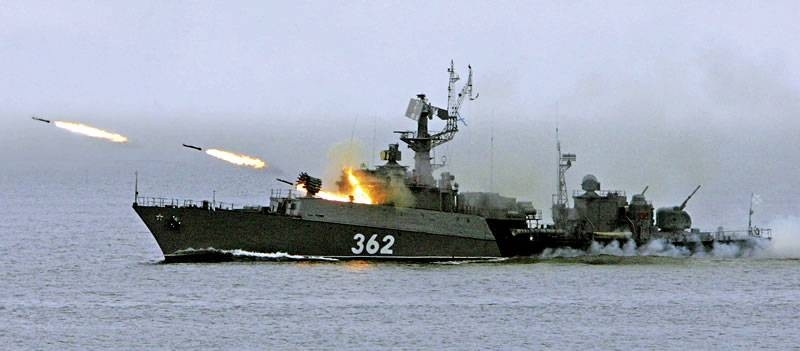
Small anti-submarine ship still useful
And in the DMZ there are already other forces - multipurpose submarines to protect SSBNs, air defense interceptors in the air, destroyers and missile cruisers to maintain dominance at sea and prevent enemy surface ships from entering the held waters, and so on.
As seen, even in the Soviet Navy, where all kinds of small warships flourished and stood en masse in ranks, the matter was not limited to them alone, and the main kind of forces in the Navy, they were not even close.
Just because, that a separate "mosquito" fleet cannot really do anything, can't even defend himself, and the country - even more so. This was confirmed by Soviet theoretical developments., this was confirmed by foreign combat experience.
This point of view is still valid today..
Rocket gunboats and patriotic myths
The history of the return of such a class of ships as MRK was discussed in the article "Does the Navy need small rocket ships?". In short - as you know, The main command of the Navy today is not a full-fledged military command body, there is no single command of the fleet, and the powers of the sailors in terms of developing the TTZ for new ships are somewhat limited - the question is what to build, may well be "corrected" by the General Staff, acting in their own way, "Land" understanding.
As a result, The Navy at a certain point in time received from the General Staff a requirement to ensure the use of long-range cruise missiles from "specialized missile ships". ICAHT, assessing economic constraints, didn’t think of anything better, how to write a TTZ for a hybrid of a small artillery ship for rivers and shallow waters (project 21360 "Buyan") and installation of vertical launch of missiles 3S-14. Along the way, a new ship, in accordance with the then trends, received imported diesels. This is how the project was born 21361 "Buyan-M" - the very ships, from which the "Caliber" was launched at targets in Syria.
Need to say, that it would be possible to launch the "Caliber" from modernized submarines, and from modernized surface ships of old types, from more or less multipurpose corvettes - if someone built them. But the questions of modernization of the existing ships and submarines "under the" Caliber "of the Navy did not bother absolutely. As a result, it all ended with the construction of highly specialized "UKSK carriers", dear, non-navigable, with sanctioned engines. The next "iteration" of RTOs is a project 22800 "Karakurt" is nothing more than an attempt to correct obvious gaps in the program 21361, taking into account the situation with diesel engines for "Karakurt" - the attempt is clearly not successful. It would seem, no reason for delight, but then our press clearly went too far, praising these "kids".
Obsessive advertising, what supernatural new RTOs made the masses not just believe it, but also to surround this conceptually obsolete class of ships with a whole host of legends. Legends of the super-powerful mosquito fleet take their places in fragile minds, gave birth to a layer of common ideas that has nothing to do with reality, naval construction, and these ideas, in full accordance with the statements of V.I.. Lenin, became a material force. And now Russia is focused on RTOs.

"Al-Nusra" uses self-made combat drones for attacks on Russian VKS in Syria
On the other hand, it's worth disassembling the myths, made by the venerable public when operating this class of ships.
Myth1. RTOs can imperceptibly reach the line of launching missiles on an aircraft carrier. The answer is no, the aircraft carrier attacks the coast from the far sea zone and continuously maneuvers. RTOs will not keep up with him, and even a weapon at a high pitch cannot be used. And the aircraft carrier can.
Myth 2. RTOs can reach a surface target from thousands of kilometers. The answer is no, a rocket is flying several thousand kilometers, designed for strikes against ground targets, anti-ship missiles do not fly this distance. This is due to the need to have a heavy seeker on board the rocket, and, Consequently, lack of space for fuel. About 380 kilometers range of the "anti-ship" "Caliber", no more.
Myth 3. ZGRLS of different types will be able to give target designation to RTOs, at which he can shoot at safe distances. The answer is no, ZGRLS does not provide sufficiently accurate information about the "contact", get data on the parameters of the target movement (course, speed), accurate enough, so that with their help it is impossible to break a missile attack.
Myth 4. MRK project 21361 can launch missiles at ships and “keeps the U.S. navy at bay”. The answer is only with an external control center, by itself, it cannot launch rockets at surface ships. sorrowfully, true?
It could be continued for a long time, but it makes no sense - so, who liked the idea of super rationality and incredible usefulness of the mosquito fleet, may already start to think. Although, eg, another representative of the "mosquito" fleet - a small anti-submarine ship, MPK, could be much more useful.
result
So does Russia need a "mosquito fleet"? partly. In the correct version, there would be a certain OVR corvette, capable of fighting SP, having a developed air defense complex, weapon and not very expensive. In general, we badly need anti-submarine ships - corvettes and frigates. Our main enemy in BMZ is not surface ships, and submarines and partly aviation. It is to fight them that our small ships must be oriented..
Strikes against surface ships are task number 1 only in the Baltic, what may require for her to create certain types of ships, eg, modern high-speed stealth missile boats. But this is an exception, acting on a specific theater of operations, there is no need to make any global conclusions. Basically, we need exactly anti-submarine. Mosquito fleet in Russia may well exist, but firstly, it will be just auxiliary (provide the same exit from the submarine bases, guard convoys and amphibious troops at crossings), and secondly, mainly anti-submarine. New small ships of the future will have powerful air defense, much more powerful, what are the available IPCs or RTOs. This is due to the growing air power of our potential adversaries..
But the most important thing, what is worth remembering: all this "mosquito" fleet under no circumstances will become the basis of the combat power of the Navy. The idea of betting on it or being limited to small ships is not working and is unable to lead to anything., except for heavy and offensive losses.
Any other statement is nothing more than another myth..
Alexander Timohin








